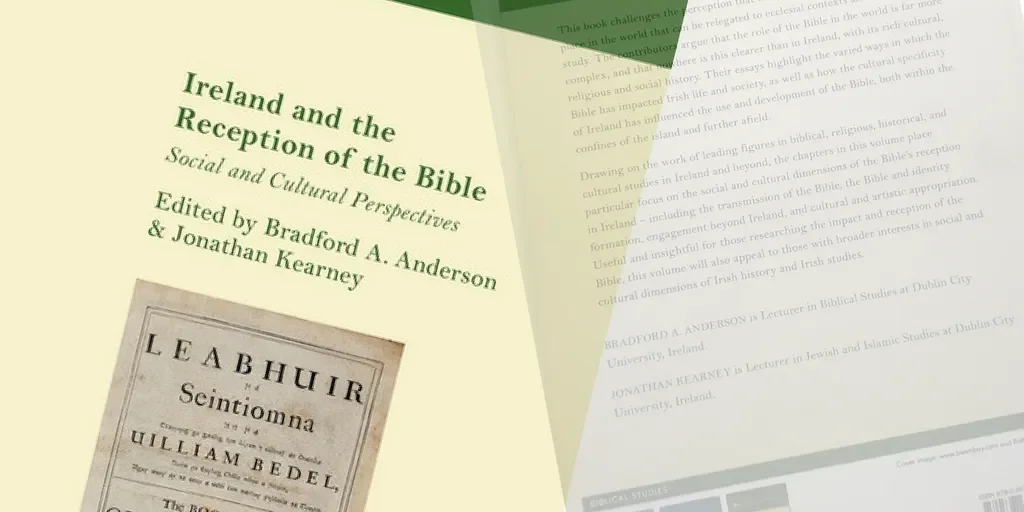

The Bible’s Boundless Influence Examined By DCU
The widespread and varied influence of the Bible in Ireland beyond religious contexts has been documented in a new publication edited by academics at DCU.
The volume, entitled Ireland and the Reception of the Bible: Social and Cultural Perspectives, explores how the Bible has been an important factor in the social and cultural dynamics of Ireland, beyond just religious environments.
The volume explores the role played by the Bible in politics, language and translation, identity formation, as well as the arts. A number of contributors from DCU, as well as leading scholars in Ireland and elsewhere, are featured.
According to Brad Anderson, co-editor of the volume and lecturer in the School of Theology, Philosophy, and Music at DCU:
“When people in Ireland think of the Bible, they often picture a dusty Bible on their granny’s shelf, or a huge book on a church altar that is far removed from daily life. In reality, however, the Bible’s role in our world is much more complex. The Bible is inextricably linked with various social and cultural dimensions, from identity formation and politics, to language and literature. Nowhere is this clearer than in Ireland.”
Providing snapshots ranging over a millennium, this book shows the Bible as being deeply embedded in Irish life. Stand-out historical examples of how the Bible has pervaded non-religious contexts in Irish culture and society include:
- History and identity: Medieval Irish writings such as the Book of Invasions interwove characters and events from the Bible when creating a history of the Irish people. In this telling, the Gaelic people trace their lineage back to the Old Testament, all the way to Genesis;
- Classical music: The most famous association of the Bible with music in an Irish context is Handel’s Messiah having its first performance in Dublin in April 1742;
- Visual imagery: The Book of Kells is the most famous Bible in Ireland, and the imagery of this volume has woven its way into Irish culture: from the rounded script that has become synonymous with Ireland, to the interlace patterns and Celtic knots found everywhere from tourist information to Irish passports;
- Literature: James Joyce may have parted ways with Catholicism, but his literary imagination was profoundly shaped by the church of his youth. One of the enduring images of Ulysses is of Bloom fleeing from a pub like the Old Testament prophet Elijah ascending on his chariot;
- Politics: In Irish politics, the Bible is usually thought to be the preserve of Ulster Unionists. However, while Irish nationalists may be less likely to quote biblical verses, two of the leaders executed in 1916, Pádraig Pearse and Joseph Mary Plunkett, saw their deaths as sacrifices by analogy with the crucifixion. Their appeal to the Bible was indirect, but ultimately grounded in the biblical story. The fact that the 1916 Rising took place on Easter Sunday had profound implications for the fusion of nationalism and Catholicism in the popular imaging in the first half of the 20th Century.
Commenting on the significance of the new publication, Jonathan Kearney, co-editor and lecturer in the School of Theology, Philosophy, and Music at DCU, said:
“Pope Francis is visiting an Ireland that, in recent years, has undergone dramatic changes regarding the place of religion in culture and society. The Pope’s visit provides a timely opportunity to explore the role that the Bible has played in shaping the landscape of Irish culture and society through the centuries, a relationship this book suggests has always been complex.”
